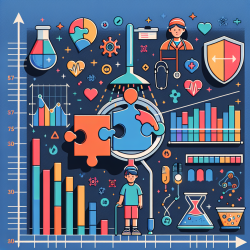Introduction
Autism Spectrum Disorder (ASD) is a complex condition affecting approximately 1 in 68 children. Traditionally, ASD diagnosis occurs around the age of 3 to 4 years, when behavioral impairments become evident. However, groundbreaking research by Shen and Piven (2017) suggests that early brain imaging can predict ASD as early as 6 months of age. This blog will explore how practitioners can leverage these findings to improve early detection and intervention, ultimately leading to better outcomes for children with ASD.
Understanding Early Brain and Behavior Development in Autism
The study "Brain and behavior development in autism from birth through infancy" highlights the developmental nature of ASD. The research identifies specific brain imaging features that emerge as early as 6 months, with age-specific brain and behavior changes observed across the first two years of life. These findings underscore the potential for early intervention, which is widely acknowledged to result in more successful outcomes.
Key Findings and Implications for Practitioners
- Early Brain Imaging: The research indicates that early brain imaging, particularly MRI, holds promise for presymptomatic prediction of ASD. Practitioners should consider advocating for early imaging in high-risk infants, such as those with siblings diagnosed with ASD.
- Behavioral Trajectories: The study reveals that behavioral markers of ASD begin to unfold between 12 and 24 months. Understanding these trajectories can help practitioners identify early signs and tailor interventions accordingly.
- Biological Markers: Increased extra-axial cerebrospinal fluid (EA-CSF) at 6 months and rapid cortical surface area expansion between 6 and 12 months are potential early biological markers. Practitioners should stay informed about advancements in identifying and utilizing these markers for early detection.
Encouraging Further Research and Application
While the findings are promising, further research is essential to refine early detection methods and develop targeted interventions. Practitioners are encouraged to engage with ongoing research, collaborate with interdisciplinary teams, and contribute to the growing body of knowledge on early ASD detection.
Conclusion
Early detection and intervention are critical in improving outcomes for children with ASD. By staying informed about the latest research and incorporating data-driven approaches, practitioners can play a pivotal role in transforming the lives of children with ASD. To read the original research paper, please follow this link: Brain and behavior development in autism from birth through infancy.










